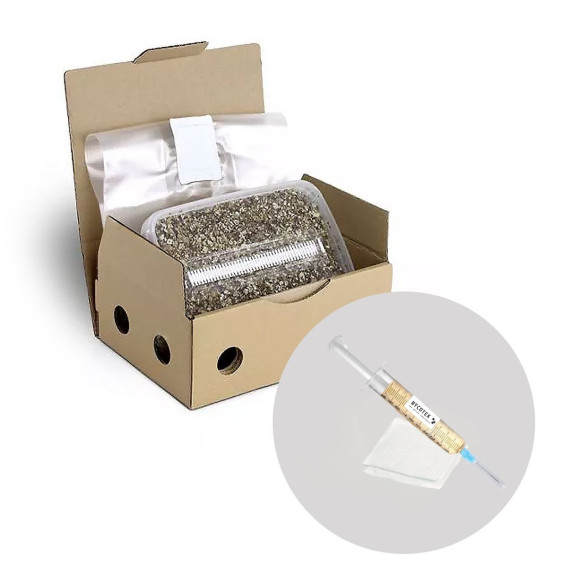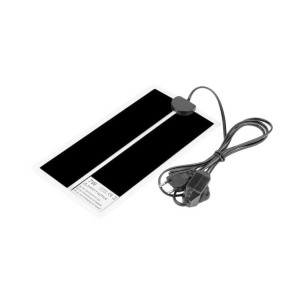Pleurotus eryngii - KING OYSTER - Mycotek Inject & Forget Growkit
Contents:
1 x syringe with Pleurotus eryngii King oyster liquid culture
1 x alcohol swab
1 x sterile substrate (1200ml) growbox
1 x unicorn grow bag
2 x paper clips
Liquid cultures pave the way for rapid substrate colonization. For the king oyster's mycelium, straw or in-home grow bags supplemented with sawdust or the master's mix stands out as the ideal substrates. Using a liquid culture, one can witness complete colonization within a mere few weeks, presenting a time-efficient alternative to spore solutions.
The distinguished King oyster mushrooms develop caps measuring between 3–10cm in diameter. Boasting a rich and meaty flavor, they seamlessly integrate into various dishes, often emerging as the star ingredient. While they hold a significant place in East Asian culinary practices, their versatility allows them to shine in diverse cuisines. Dive into the world of mushroom cultivation with these liquid cultures, and revel in the ease of nurturing king oyster mushrooms at home.
Commonly known as King Oyster mushroom, Pleurotus eryngii is lauded for its polysaccharides with prebiotic potentials, as well as its abundant mineral, phenolic, and vitamin content. A gem among mushrooms, it garners attention from culinary enthusiasts due to its superior organoleptic properties. Found primarily in grasslands, its habitat often includes wild thistles, Sea Holly (Eryngium campestre), and other umbellifers. Besides its scientific name, it goes by several regional names like ‘Gardu Ziza’ in Basque Country, ‘Gírgola de panical’ in Catalonia, and ‘Seta de cemtcamps’ in Valencia.
P. eryngii is renowned for its repository of active biomolecules, predominantly β-glucans (immune-boosting polysaccharides) and vital minerals like potassium and phosphorus. Its composition also includes natural antioxidants like phenolic compounds and ergothioneine. Given its rich bioactive compounds, it remains at the forefront of scientific inquiries across areas:
- Digestive health
- Immune system fortification
- Comprehensive oncology aid
Indigenous to Western Europe, Central Europe, Central Asia, and Southwest Russia, P. eryngii belongs to the revered Pleurotus genus, renowned for its dietary and functional advantages. Researchers have delved deep into its lignocellulosic enzyme complexes, unearthing an array of compounds with therapeutic potential, positioning it as a promising candidate for medicinal and biotechnological ventures. This has catalyzed the mushroom's widespread cultivation and exploration into its role as a health-enhancing food source.
The mushroom favors limestone-rich soils, thriving especially in regions with remnants of wild thistles. While its presence is dominant in Europe and Asia, it can also be spotted in select African regions with warmer climes.
The appearance of P.eryngii closely mirrors that of P. ostreatus. Sporting a cap between 4 to 10 cm, it flaunts a lightening brown hue as it matures. Characterized by initial white gills that transition to a creamy shade, it boasts white, sturdy flesh accompanied by a delightful aroma and sweet flavor profile. The robust stem stands out as its defining feature, exuding a pure white color and a firm texture.
Guidelines to Remember:
While a generous amount of LC can expedite colonization, it's prudent not to go beyond 5ml for each litre/quart jar. In scenarios where the grain retains moisture post hydration/sterilization, it's wise to limit the LC quantity to prevent bacterial contamination due to excess moisture.
You might also like






